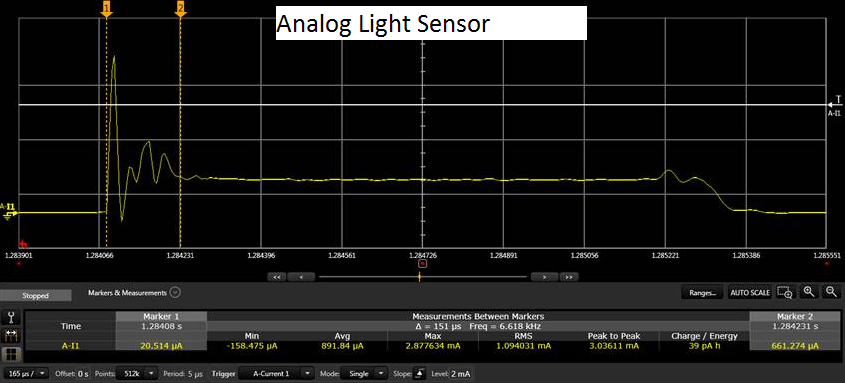Using sensor controller studio 1.1.0.38192 to program the sensor controller of cc2650 as follows:
In Initialization code,
evhSetupGpioTrigger(0, 14, 0, EVH_GPIO_TRIG_ON_EDGE) ;
in Event Handler code,
gpioSetOutput(9);
:
:
gpioClearOutput(9);
no code for Execution code and Termination code.
after that, the .c and .h files are generated by the studio and put the files into application folder of simpleBLEperipheral.
the main_tirtos.c is called for the sensor controller and keep it run.
an signal is input to DIO1 (Aux index 14)
DIO6 (Aux index 9) is the output.
Both pins are monitored with a scope.
when input signal generate a falling edge, it wait for a delay of 410us to have the output High from DIO6.
and after 10us, DIO6 fall back to ground, which mean the code in "Event Handler code" only needs 10us to finish.
The question are,
1. what the system is working during the 410us delay? from datasheet of cc2650, the typical start up time for 48MHz RCOSC_HF is 5us.
2. How to calculate the current consumption of the sensor controller based on this code which takes 10us and the 410us delay?
3. After execution of the sensor controller code, after the 10us, how much time does it take for the RCOSC_HF to keep running before switching off?
Regards, Thomas


